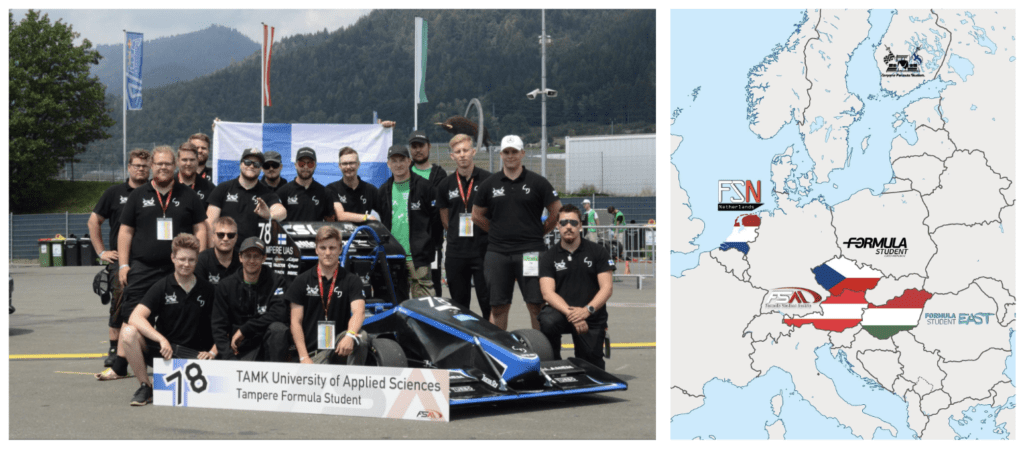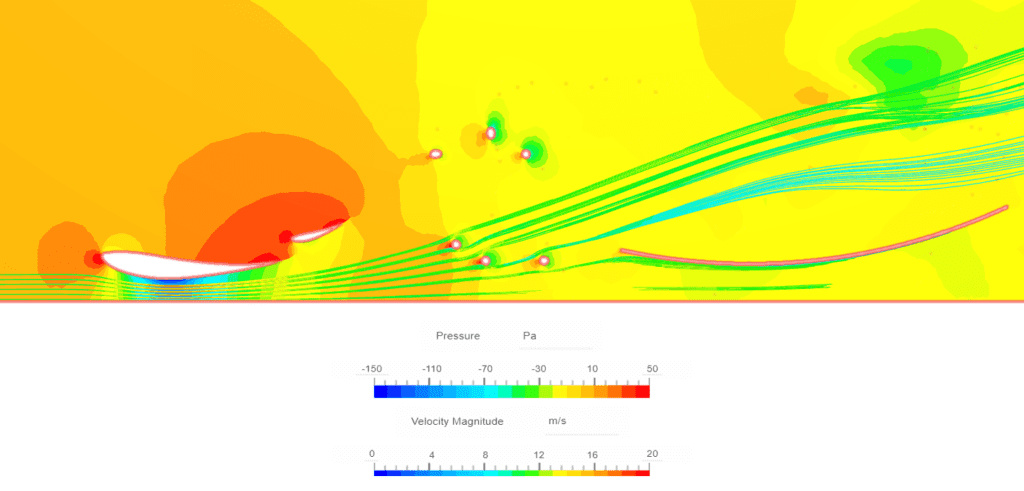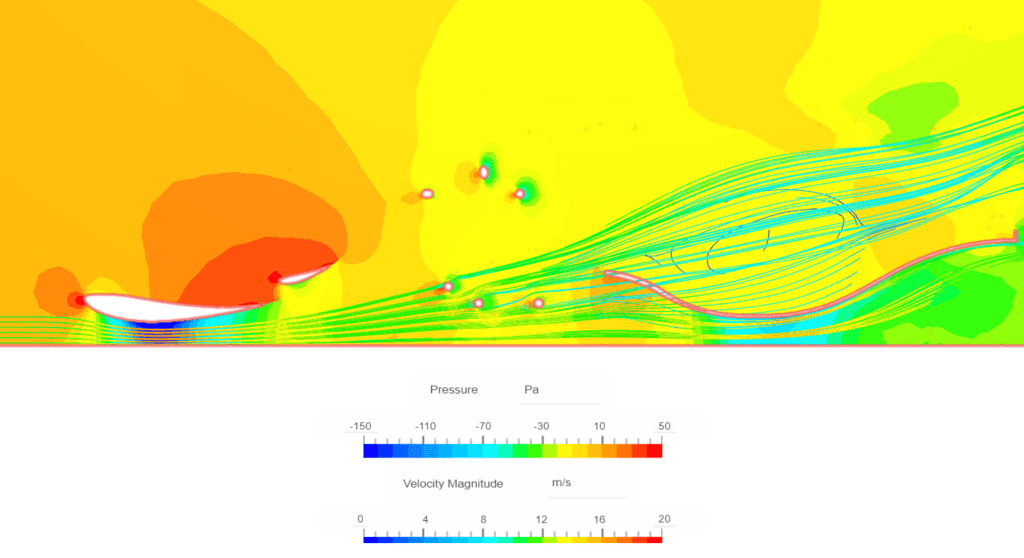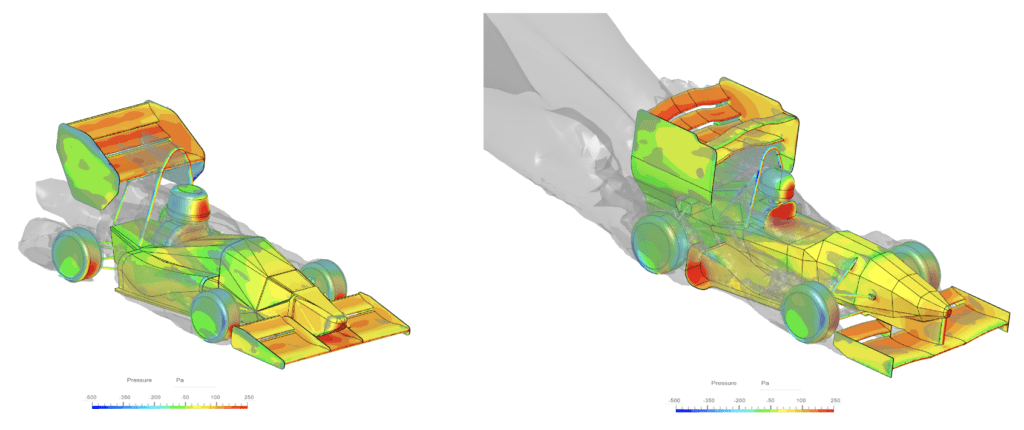In this SimScale student success story blog, we speak with Samuli Harjula who is the head of the aerodynamics department of the Tampere Formula Student Team. Samuli answers some of our questions regarding their experience with the SimScale platform as a team.
Tampere Formula Student is a motorsport designing team comprised of student members at Tampere Universities. In 2022, they competed in four different competitions and have recovered from their 6-week competition trip and are now ready for more challenges in 2023.

Tampere Formula Student team is relatively small, compared to other European teams. However, they possess an amazing team spirit and everyone in the team knows each other which helps the communication between departments. Their common passion is in combustion vehicles and they enjoy finding new ways to improve their performance with limited resources. They have team members from several grades, and their oldest teammates now are graduating and becoming alumni of the community after almost four years together. In the previous year’s recruitment event, they expanded their population with 1st grades as well. Since they’re always recruiting new students who need training in using CAE software, they stated that SimScale came in very handy considering the ease of use of the platform.
“Our aerodynamics department consists mostly of new team members, so SimScale’s simple interface and visual results helped new members to keep workflow and learn from the results.”
Samuli Harjula
The Problem: Underbody Design
Now that the Tampere Formula Student team has started designing next year’s aerodynamic design, they’ve faced some challenges with the efficiency of the underbody of their design. They inspected the design using post-processing tools within SimScale such as particle traces and iso-volumes, and soon they noticed that the upwash greatly reduced the amount of air flowing to the underbody intakes. The problem was that the underbody intakes were too low to use with the front wing so they extended the underbody’s intake much higher and redesigned the intakes’ overall shape. Although optimization of the design is still in progress, they’ve already learned a lot about underbody aerodynamics and behavior. The change in velocity contours and turbulent kinetic energy values for two different design alternatives can be seen below.


How They Solved It: SimScale Incompressible Simulations
In their SimScale simulation runs, they used the incompressible simulation type with the k-omega SST turbulence model. They studied aerodynamics in a free-flow region using boundary conditions such as velocity inlet, moving walls for the ground, and rotating walls for the tires to simulate a moving car. As underbody aerodynamics was unfamiliar with the team’s current aerodynamics department, they chose to pursue two different concepts simultaneously to keep their minds open in the early concept phase.
“SimScale’s server-based CFD software allowed us to keep working on two different projects simultaneously and additionally run multiple simulations at the same time. As having limited man hours, this was very helpful.”
Samuli Harjula
While performing design iterations, Tampere Formula Student team took advantage of Result Control items in order to monitor the forces not only on the entire car but also on individual parts of the car. In the end, they were able to increase the downforce by 200% at 10 m/s, and 250% at 20 m/s with the new design! Such a great difference was achieved by adding more wing profiles and iterating the underbody design within the SimScale platform.

Next Steps for Tampere Formula Student
Tampere Formula Student team is going to continue developing their aerodynamic package even further and inspect possible design alternatives. They are aiming to add more details and features to their simulation models to make them more detailed with the wheels, hubs, and a more realistic engine mockup. They are also interested in simulating brake discs and radiators in addition to aerodynamic devices.
We are sure that the wide range of simulation capabilities within SimScale will be beneficial for the Tampere Formula Student team for future applications and we are looking forward to cooperating with them in the future. If your team is also interested in an academic sponsorship to enhance the performance of your vehicle, no matter if it is in Formula Student or any other competition, make sure to check out our Academic Plan for students who are joining design competitions.


